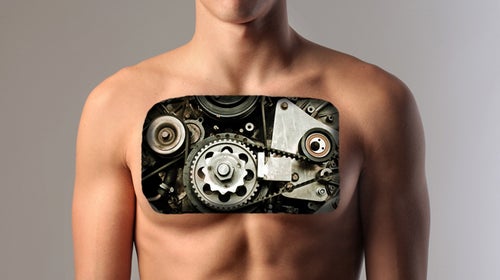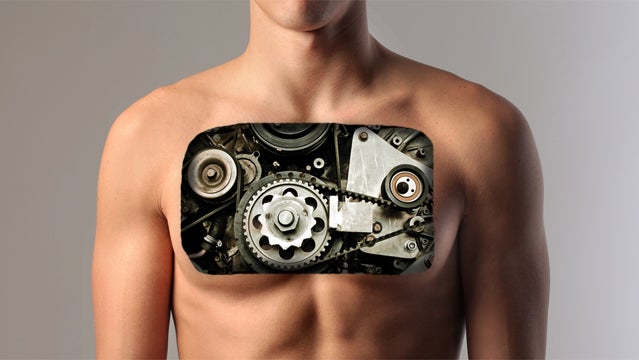Even if you exercise regularly, sitting at your desk all day will kill you. Literally. One study by the found that men who sit for six or more hours a day are 20 percent more likely to die from a given cause than men who sit for less than three hours. Other research has linked prolonged daily sitting to high blood pressure, cancer, and diabetes.
How to Work Better
Scientists have found that physical movement inspires creative problem solving. To craft your own ideal setup, follow these suggestions from Todd Meier, an ergonomics expert at insurance company the Standard, and Carey Fitzgerald, an expert in evolutionary psychology at Michigan’s Oakland University.
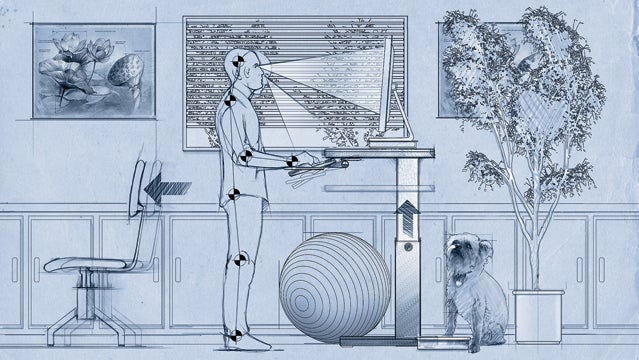

How to Make Working at Your Desk into a Healthy Experience
- A number of pricey treadmill desks have popped up recently, but you’ll get many of the same benefits by simply standing for two-thirds of your day. ($750) allows you to create all kinds of workstations. You can even hook up your bike to a trainer—we like the ($400)—with your front tire under your desk.
- Sitting on a physio ball like the ($20) corrects your posture and strengthens your core. Ease into it—your abs will be sore after a few hours.
- Awkward wrist, arm, and shoulder positions lead to muscle knots and carpal tunnel syndrome. Your elbows should dangle even with your keyboard and mouse, and your wrists and forearms should be in a straight line. A makes this easy ($139).
- To prevent eyestrain, position your computer monitor at least 18 inches from your face. To prevent neck strain, it should be directly in front of you at eye height, tilted up 10 to 20 degrees. Placing it on books works as well as a stand.
- A 2011 study published in the science journal found that greenery decreases anger and frustration.
- Simply petting your dog increases your level of oxy-tocin, a.k.a. the love hormone, resulting in lower stress levels.
- A growing number of studies suggests that images of nature will boost your memory, attention, and concen-tration almost as much as the real thing does.
- Exposure to sun-light, even if the UVB rays are filtered out by a window, has been shown to improve mood.
How to Sleep Better
Not getting enough rest impairs your attention, hinders your reflexes, and leaves you prone to emotional outbursts. For athletes, that’s an awesome recipe for poor performance—and possibly injury and lasting shame. Which is why top professional triathlete Andy Potts makes sure to get 11 hours a night despite being a dad to two young kids and following an intense training schedule.
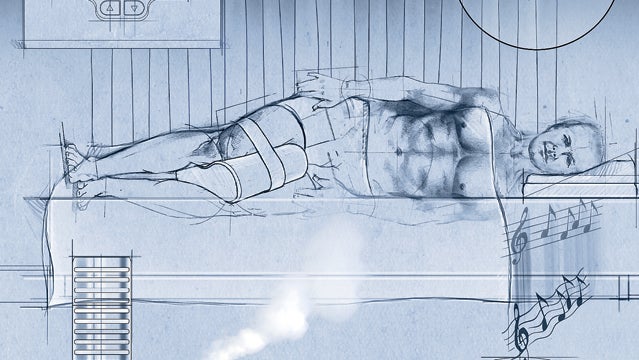
We asked Potts about his methods and ran some of his answers by Dr. Charles Samuels, medical director at the Centre for Sleep and Human Performance in Calgary.
- My wife and I share a king-size bed. I’m not a spooning type of guy. All couples should sleep in beds big enough that they won’t wake each other. If your spouse snores, have him or her sleep in another room. —Dr. Samuels
- Serta mattress; medium-hard, no pillow top. I like two nice hard pillows. The soft ones drive me crazy, because I want my head to be elevated. Firmness of mattress and pillows is totally personal. Go with what works for you.
- A between my knees aligns my back and makes for a more comfortable rest.
- I always untuck the sheets. I like unrestricted movement, so that when I roll over during the night it doesn’t wake me up.
- I need pitch black to sleep, so we installed , which also reduce street noise.
- I use a humidifier, which prevents dry throat and nose, two things that used to interrupt my sleep. Upper-airway discomfort is a common cause of poor sleep. Any kind of humidifier will help. Also try a saline nasal wash, like .
- I prefer to sleep in 65 to 68 degrees. I’d rather be too cold than too hot. An athlete’s resting core temperature can vary dramatically with training intensity.
- Ever since my kids were born, I sleep with . They’re only noise dampening, so I can still hear the major cries, but the little things no longer wake me.
- I set my alarm clock to an easy-listening station so that I don’t wake up to that annoying blast, which instantly puts me in a bad mood. People use all kinds of systems and sophisticated gadgets to wake up happier. Some athletes use bio-alarms, which are sup-posed to wake you at your lightest stage of sleep during a 30-minute window. But there really are no rules about what works best.
How to Exercise Better
There is no reasonable argument for paying $3,000-plus for a road bike but not a couple hundred bucks to have it fit perfectly to your body and riding style. In the past few years, bike brands have invested heavily in fit technology that precisely records your ideal position and then compares it with a database of bikes and components to suggest the best combination. The result: you’re faster (a fit can boost power output by 10 percent) and more comfortable.
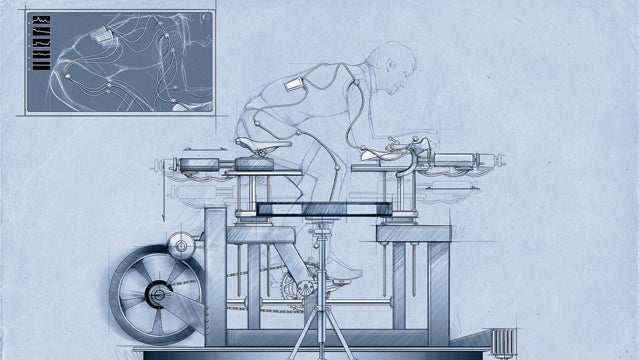
How to Fit Your Bike to Your Body
- Tron-style fit bikes like the and the allow assessment and adjustment of every measurement without the rider ever having to dismount.
- Video is displayed as you pedal, and fitters can compare footage of different fits. In some systems, bikes are set on a 360-degree turntable. Others, like , add a second camera.
- The attaches sensors to your flex points that transmit fit angles to a computer to capture static positions and patterns, like how your knee tracks through a pedal stroke.
- Power meters test how a position affects rider output. Small tweaks can make a significant difference.
- Your contact points with the bike matter most. Many fitters offer custom footbeds and pedals with varying spindle widths. The Specialized Body Geometry sit-bone tool measures hip width, so you can choose the ideal saddle.
Find the Right Bike
- : Get fit on the Müve Dynamic at one of 280 U.S. sites. From $300.
- : Some 60 retailers run the Experience system. From $100.
- : This San Francisco shop offers the greatest number of custom options. From $195.
- : The largest selection of components and some 200 fit centers. From $250.
